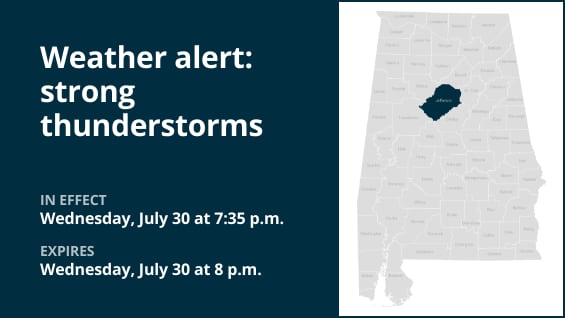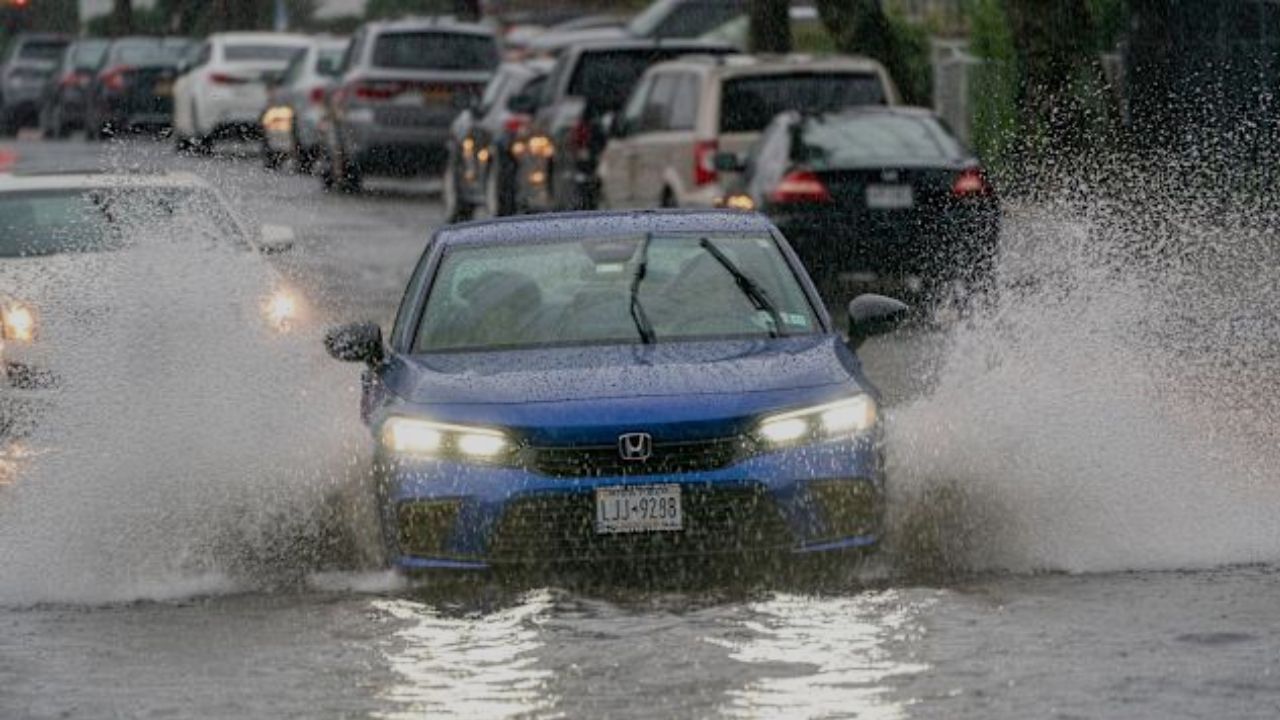At 7:35 p.m. on Wednesday, the National Weather Service issued an updated forecast for Jefferson County that called for heavy thunderstorms until 8 p.m.
Wind gusts of up to 40 mph are anticipated for the local population.
Doppler radar detected a powerful thunderstorm over eastern Birmingham at 7:35 p.m. According to the weather service, this thunderstorm was essentially stationary. “Gusty winds could knock down tree limbs and blow around unsecured objects.”
B.j.c.c., Kingston, Five Points South, Regions Field, Birmingham Airport, The Summit, U.A.B. Campus, Samford University, Lake Purdy, Ruffner Mountain, Birmingham Zoo, Liberty Park, Vulcan Park, Birmingham, Vestavia Hills, Homewood, Mountain Brook, Irondale, Tarrant, Cahaba Heights, and B.j.c.c.
According to the weather service, “If outdoors, consider seeking shelter inside a building.”
Staying safe as lightning approaches: Expert advice
Approximately 25 million lightning strikes occur in the United States annually, most of which take place in the summer. The weather service reports that lightning is the cause of death for about 20 persons each year. As thunderstorms get closer, the risk of lightning increases; it peaks when the storm is directly overhead and then progressively decreases as it passes.
Remember the following advice to stay safe during a thunderstorm:
Plan for lightning safety:
-
When venturing outdoors, it’s vital to establish a clear plan for seeking shelter in case of lightning.
-
Monitor the sky for threatening signs and listen for the sound of thunder. If thunder is audible, it’s an indication that lightning is nearby.
-
Seek shelter promptly in a safe location, preferably indoors.
Indoor safety precautions:
-
Once you’re indoors, avoid using corded phones, electrical devices, plumbing fixtures, and stay away from windows and doors.
-
Lightning can follow conductive pathways, and these precautions reduce the risk of electrical surges.
Hold off till the all-clear:
-
After the last lightning strike or thunderclap, wait at least 30 minutes before resuming outdoor activities.
-
Lightning can strike even when a storm has seemingly passed, so exercise caution.
When there is no indoor shelter:
Take these precautions to increase your safety if you are outside during a thunderstorm without access to inside shelter:
-
Avoid open fields, hilltops, or ridge crests, which expose you to greater lightning risk.
-
Steer clear of tall, isolated trees and other prominent objects. In forested areas, stay close to lower stands of trees.
-
If you’re with a group, ensure individuals are spread out to prevent lightning current from transferring between people.
-
Camping in an open setting during a thunderstorm is strongly discouraged. If you have no alternative, set up camp in a valley, ravine, or other low-lying areas. It’s crucial to note that a tent provides no protection against lightning.
-
Do not approach water bodies, wet objects, or metal items. While water and metal don’t attract lightning, they conduct electricity effectively and can pose significant risks.
In conclusion, being alert and ready are your best defenses against lightning threats. You may put your safety first and drastically lower the likelihood of lightning-related mishaps by adhering to these rules.
Rainy roadways ahead: Essential safety tips for heavy rain
There is a greater chance of floods and dangerous roadways when it rains a lot. The weather service has provided the following advice to help you keep safe during downpours:
Watch out for flooding rivers:
Avoid parking or strolling close to culverts or drainage ditches during periods of intense precipitation, as the swift-moving water can be quite dangerous.
Keep your distances from other vehicles safe:
In heavy rain, the two-second rule of following distance is your friend. To guarantee safe spacing under unfavorable circumstances, increase it to four seconds.
Reduce your speed and exercise caution:
Lowering your speed is essential on wet roads. To prevent skidding, gently release the gas pedal and refrain from applying sudden braking.
Pick your lane carefully:
To reduce the chance of hydroplaning, stay in the middle lanes. Water is more likely to accumulate in outside lanes.
Visibility is important.
Turn on your headlights to improve visibility in severe rain. Rain-stained windows can make it difficult to see cars in blind spots, so be especially alert for them.
Be cautious on slick roads:
During the first half hour after the rain starts, exercise additional caution. The road becomes slick when water combines with dirt and oil on the surface.
Stay a safe distance away from big cars:
Avoid following buses or big vehicles too closely. Their big tires produce a mist that blurs your eyesight. Additionally, be cautious when passing them; if you have to, pass swiftly and securely.
Be mindful of your wipers:
Visibility may be hampered by overloaded wiper blades. If the rain makes it very difficult to see, stop and wait for the weather to clear up. Look for cover in covered areas or rest areas.
If you can’t avoid the roadside, pull off as far as you can, ideally past the end of a guard rail, and wait for the storm to pass. To let other cars know where you are, turn on your emergency flashers and keep your headlights on.
You may greatly lower dangers and protect your health when it rains a lot by adhering to these safety precautions. To ensure a safe and sound voyage, keep yourself updated on weather conditions and follow local authorities’ instructions.
United Robots offers a service called Advance Local Weather Alerts that gathers the most recent information from the National Weather Service using machine learning.






